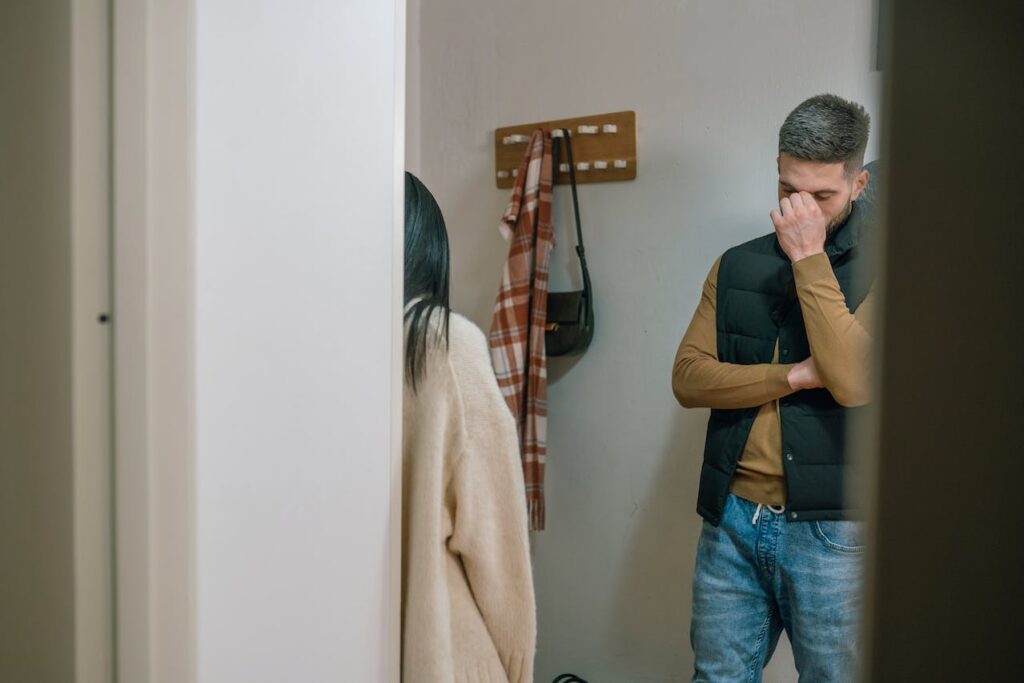
PTSD from Relationships: Recognizing and Coping with Trauma
The effects of traumatic experiences are not limited to battlefields or catastrophic events. Quite often, emotional battle scars originate from places much closer to home, such as intimate relationships. Whether stemming from emotional, physical, or psychological abuse within these connections, post-traumatic stress disorder (PTSD) can develop, leaving individuals grappling with persistent and debilitating symptoms that deeply impact their day-to-day lives and sense of self-worth.
Recognizing PTSD resulting from relationship trauma is the first step towards healing and reclaiming one’s life. By understanding the signs and cultivating coping strategies, victims can embark on a journey toward recovery and self-awareness. If you or someone you know may be experiencing PTSD from past relationships, delving into its manifestations and healing modalities can be transformative. Continue reading to shed light on this deeply personal, yet vitally important, aspect of mental health.
What is Relationship PTSD?
When we discuss trauma, it often pertains to a distressing situation or a series of dangerous, life-threatening events. One specific trauma that often goes overlooked is rooted in abusive relationships, known as relationship PTSD or post-traumatic relationship syndrome (PTRS). While PTSD is a well-known anxiety-based condition triggered by distressing events, relationship PTSD narrows this down to traumatic events within the context of intimate partnerships. This form of PTSD doesn’t just arise from physical abuse. In many cases, individuals suffering from relationship PTSD have undergone various forms of abuse and mistreatment in their relationships.
What Causes Relationship PTSD?
At the heart of relationship PTSD is trauma stemming from events in a romantic relationship. The causative incidents predominantly revolve around abuse. Unfortunately, abuse can wear many masks, making it hard to recognize. The myriad types of relationship abuse encompass physical violence, emotional manipulation, and more. To further understand, let’s break it down:
- Physical Abuse: This includes violence, deliberate destruction of personal property, coercion into self-harm, or substance abuse.
- Emotional Abuse: Manifesting as insults, threats, stalking, or controlling one’s actions and choices.
- Sexual Abuse: Ranging from rape, sexual assault, to any form of coercion into unwanted sexual activity.
- Financial or Economic Abuse: Activities like withholding money, forceful taking of money, or preventing someone from earning.
- Technological Abuse: Here, the abuser controls the victim’s social media, monitors devices, or uses technology as a means to threaten or blackmail.
- Spiritual Abuse: Involves controlling a person’s religious beliefs or stopping them from practicing their religion.
Exposure to any of these abuse forms can lead to serious repercussions for an individual’s mental health, often culminating in relationship PTSD.
How Does Relationship PTSD Differ from General PTSD?
PTSD, whether stemming from relationships or other traumatic events, has many overlapping symptoms. However, the nuances between general PTSD and relationship PTSD are crucial. General PTSD can manifest from various traumatic experiences, from war scenarios to natural disasters. Its symptoms, although multifaceted, are broadly categorized into:
- Re-experiencing Symptoms: Reliving the trauma through flashbacks, nightmares, or intrusive memories.
- Avoidance Symptoms: Intentionally avoiding places, people, or situations that remind one of the trauma.
- Arousal and Reactivating Symptoms: Displaying heightened reactions, like being easily startled, having angry outbursts, or facing difficulties in sleeping.
- Mood and Cognition Symptoms: Experiencing feelings of guilt, blame, or alienation, and having challenges with memory or concentration.
- Somatic (Physical) Symptoms: Physical manifestations like headaches, stomach issues, or muscle tension.
Relationship PTSD, on the other hand, specifically focuses on traumas within the relational space, making its triggers and patterns distinct. Although the symptom categories might look similar, the underlying causes and the recovery journey can differ, emphasizing the need for tailored interventions and therapies.
Recognizing Different Forms of Abuse
Subtle Red Flags
Often, the most insidious forms of abuse aren’t overt. They manifest as subtle manipulations or behaviors that make the victim question their reality. Gaslighting, a tactic where the abuser makes the victim doubt their memory or perception, is one such example. Being aware of such tactics is essential, as recognition is the first step towards seeking help and healing.
The Impact of Digital Age Abuse
In the digital age, abuse can transcend physical boundaries. Cyberbullying, revenge porn, and online stalking are modern forms of trauma that can leave deep psychological scars. Recognizing these newer forms of abuse is crucial, given our increased online presence and the convergence of digital and real lives.
The Role of Social Support in Recovery
Building a Strong Network
Finding and maintaining a strong support network is vital for anyone recovering from relationship PTSD. This network can comprise friends, family, or support groups. Just having someone to talk to, someone who validates your feelings and experiences, can be immensely healing.
Leveraging Online Communities
There are numerous online communities dedicated to helping individuals heal from relationship trauma. These platforms can be valuable, especially for those who aren’t ready to share their stories face-to-face. Such communities can provide a sense of belonging and understanding that’s hard to find elsewhere.

Holistic Approaches to Healing
Yoga and Meditation
Holistic practices like yoga and meditation can be therapeutic for individuals recovering from trauma. The focus on mindfulness, breath control, and grounding can help victims regain control over their bodies and minds, offering a reprieve from the intrusive thoughts and heightened anxiety characteristic of PTSD.
Nature Therapy
The healing power of nature cannot be understated. Regularly spending time outdoors, whether it’s a walk in the park or a hike in the mountains, can have therapeutic effects. Nature can provide a calm, grounding environment that can help individuals reconnect with themselves, away from the chaos of traumatic memories.
Related Link: Types of CBD: Full-spectrum vs. Broad-spectrum vs. Isolate
Cultivating Self-love and Rebuilding Self-worth
Embracing Self-care
Recovery isn’t just about addressing trauma—it’s also about rebuilding and nurturing oneself. Adopting self-care routines, like journaling, indulging in hobbies, or even pampering oneself, can help victims rebuild their sense of self-worth eroded by abuse.
Setting Boundaries
Learning to set boundaries is a critical step in ensuring one doesn’t end up in a similar traumatic situation again. These can be emotional, physical, or even digital boundaries. Asserting and maintaining these boundaries can be empowering and can provide a sense of regained control over one’s life.
Searching for CBD products to help with anxiety? Checkout our CBD selection today.
Can CBD Help Alleviate Relationship PTSD Symptoms?
Recent studies suggest that Cannabidiol (CBD), a non-psychoactive compound derived from the cannabis plant, holds potential therapeutic benefits for PTSD, including relationship PTSD. CBD is believed to influence the endocannabinoid system, which plays a role in mood regulation, stress response, and memory processing — all pivotal aspects of PTSD symptomatology. Preliminary research and anecdotal evidence indicate that CBD may help reduce anxiety, sleep disturbances, and recurring traumatic flashbacks often associated with PTSD. However, it’s essential to consult with a healthcare professional before incorporating CBD or any supplement into one’s treatment regimen, ensuring safety and efficacy tailored to individual needs.
Looking for more information about CBD? Visit our blog today.

Understanding Relationship-Induced PTSD
Navigating the turbulent waters of PTSD stemming from intimate relationships can be daunting. Recognizing and understanding the origins, manifestations, and coping strategies is the first step towards a journey of recovery and self-awareness. As research continues to unfold around the potential benefits of holistic treatments, CBD emerges as a promising avenue for some. If you’re considering integrating CBD into your healing process, check out Fiddler’s CBD for high-quality CBD products. Remember, no matter the path you choose, seeking professional advice and surrounding oneself with supportive networks is paramount to healing and reclaiming one’s life.
Related Link: CBD for Anxiety and OCD: A Promising Treatment Option

